In the ever-expanding world of cannabis, two compounds dominate the public space: Tetrahydrocannabinol (THC) and Cannabidiol (CBD). These phytocannabinoids are the most well-known in the cannabis plant and have been a part of human history for more than 10,000 years. As the marijuana laws and industry evolve, understanding the differences between THC and CBD is essential.
This is why, in this article, we will review what sets them apart, their unique properties, and their effects on our bodies.
Overview of THC and CBD
The fundamental differences between the two compounds are expressed in how they interact with and affect our organism.
Although both cannabinoids have the same chemical makeup: 21 carbon atoms, 30 hydrogen atoms, and 2 oxygen atoms, their arrangement differs. The body also reacts to them as two different substances.
THC
THC is psychoactive, meaning it gets you “high” or alters your state of consciousness. It attaches itself to specific brain and central nervous system receptors, producing euphoria, relaxation, altered perception of time, and an insensible appetite for all kinds of snacks, known as the munchies.
Due to its psychoactive nature, THC is often subject to legal restrictions. In many places, it’s illegal for medical or recreational use in most circumstances.
CBD
CBD, on the other hand, doesn’t have psychoactive effects since it does not directly bind to the mentioned receptors. Because of this, it’s legal in many parts of the world as long as it’s derived from plants containing less than 0.3% THC.
CBD has shown promise in promoting muscle relaxation and treating conditions like epilepsy, anxiety, and inflammation. It also helps regulate the effects of THC.
THC vs CBD
The simplest way to think of the two cannabinoids is that THC has a strong effect on the mind and CBD on the body.
Another difference is that THC can be found only in the female cannabis plant’s resin and is produced by the so-called trichome, while CBD can also be extracted from a male plant.
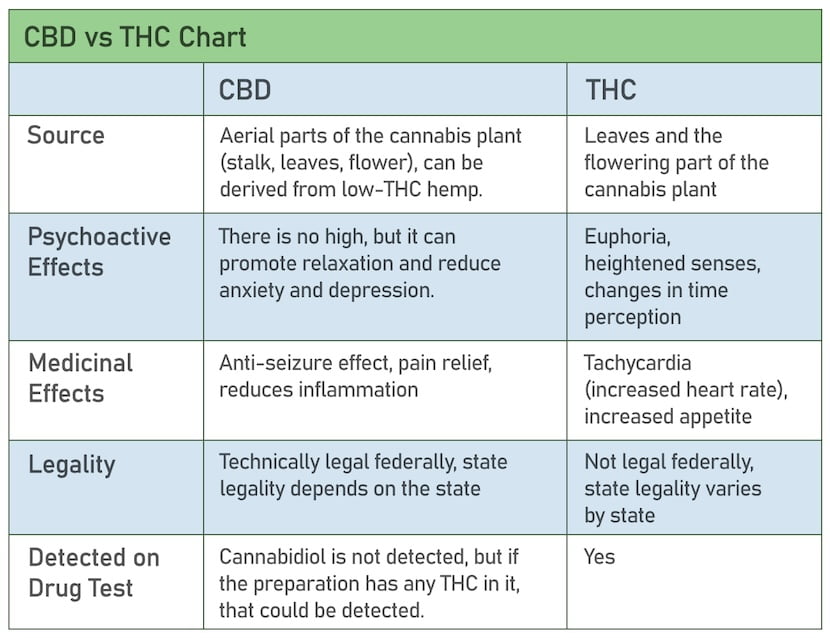
Now that we’ve covered the basics, let’s dive deeper into the differences between the two cannabinoids.
Understanding Tetrahydrocannabinol (THC)
THC stands out as the most contentious cannabinoid and, in our view, the most captivating one as well. Tetrahydrocannabinol or delta-9 tetrahydrocannabinol (Δ9-THC) is the sole agent with psychoactive properties among more than 100 cannabinoids in the cannabis plant.
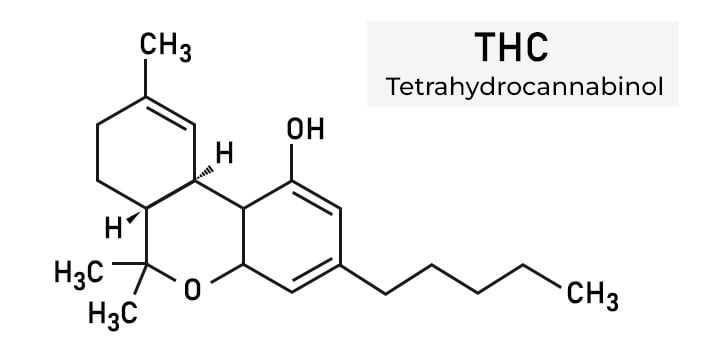
According to the World Health Organization (WHO), a psychoactive substance is a substance that, when consumed, impacts mental processes, such as thinking, mood, perception, and consciousness. This definition doesn’t necessarily only refer to recreational drugs—it can also include substances like nicotine or caffeine.
The cannabinoid made its debut in 1964, thanks to Raphael Mechoulam’s groundbreaking work in Israel. Mechoulam uncovered that when THC is inhaled, it swiftly journeys to the brain via the bloodstream, latching onto cannabinoid receptors associated with cognition, memory, pleasure, and motor skills.
What is delta-9 THC?
Delta-9 represents just one of THC’s many variations or isomers. Alongside delta-8, delta-10, and delta-7, it stands out as the most potent variant, typically the focus of discussions when discussing Tetrahydrocannabinol.
In ancient times, cannabis strains boasted lower THC levels. However, more potent varieties emerged as human exploration extended to higher altitudes. This evolution, we speculate, stems from the plant’s adaptation to harsher conditions, resulting in heightened THC concentrations as a stress response.
Scientists believe the compound likely played a pivotal role in the plant’s survival, potentially serving as a defence mechanism.
Anandamide and THC’s Monopoly on Intoxication
You might be wondering why only THC can get us high? Well, it has to do with its relationship with the Endocannabinoid system (ECS) and, more specifically, the endocannabinoid, anandamide.
The ECS is millions of years old and is vital to our survival. It helps our bodies maintain balance and harmony and adjusts them to outside conditions. It can be found throughout our central and peripheral nervous systems and consists of enzymes, CB1 and CB2 receptors (CB = cannabinoid) and endocannabinoids.
These are naturally occurring compounds in our organism, which means that we all produce cannabis-like molecules within us.
What’s special about anandamide is that it has all the traits of THC—or rather, THC can mimic anandamide’s qualities. Its name comes from Sanskrit, meaning happiness or bliss. It’s often called the Bliss molecule because it causes euphoria and joy.
THC essentially acts as its doppelgänger. It can seamlessly integrate into the endocannabinoid system by attaching itself to the same CB receptors as anandamide, taking over its responsibilities. Once in the brain, THC binds to neurons, triggering the familiar cascade of effects. This way, our body doesn’t recognise the intruder and allows it to sail undetected.
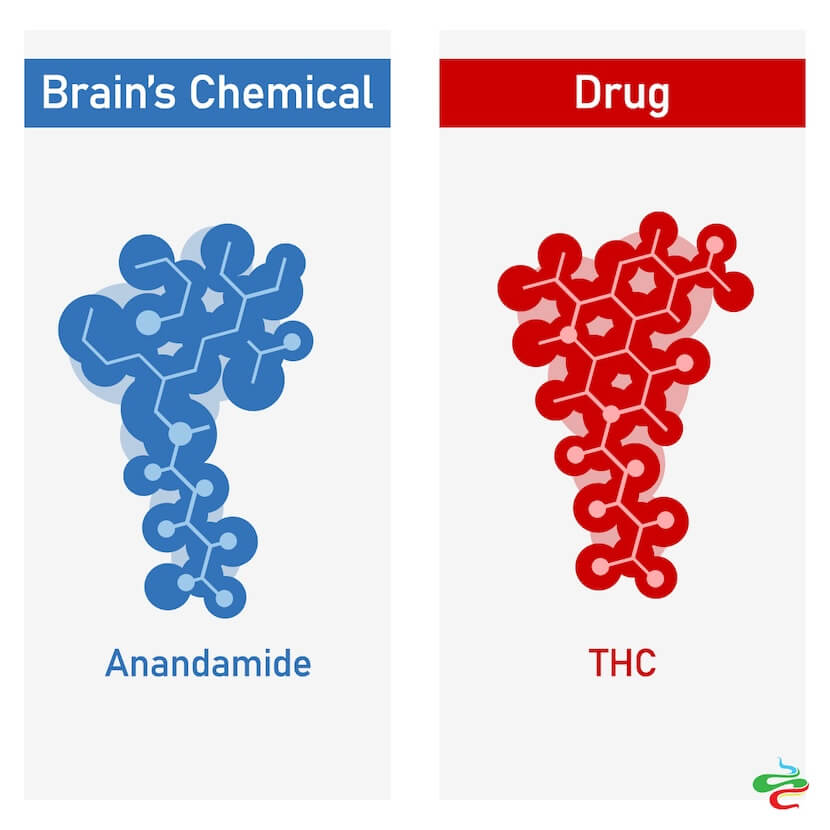
Through the cannabinoid receptors, THC also activates the brain’s reward system, which includes regions that govern the response to pleasurable behaviours such as sex and eating. Like most other substances that people use, THC stimulates neurons in the reward system, which signals them to release dopamine at higher levels than usually observed. The surge of dopamine “teaches” the brain to repeat the rewarding behaviour, helping account for marijuana’s addictive properties.
Legality
These addictive properties are one of the reasons why cannabis is a Schedule 1 controlled substance by the U.S. Drug Enforcement Agency (DEA) under the Controlled Substances Act. Internationally, cannabis is regulated by the UN’s 1961 Single Convention on Narcotic Drugs.
Under Schedule 1, THC is considered to have a high likelihood of abuse and no current medical value despite being legal in some cities and states, including for medical purposes.
Medical and Therapeutic Potential
THC is contained in the cannabis bud, which is very versatile. It can be used to make hashish, oil, and tinctures. THC can also be extracted or synthesised for medical and therapeutic purposes.
Hash is a solid or paste-like substance made by compressing or purifying the resin from the buds. When the resin is extracted into its purest form, it’s made into hash oil, which is the most potent.
Research shows that THC has the potential to help with conditions ranging from chronic pain, muscle spasms, appetite loss, nausea, seizures, and anxiety.
It can help people with nausea and vomiting from chemotherapy. Patients suffering from chronic pain who are treated with cannabis report a notable reduction in pain symptoms. For multiple sclerosis (MS)-related spasticity, short-term use improves the patients’ reported symptoms.
Currently, the U.S. and Europe approved two synthetic THC formulas for treating specific conditions: nabilone and dronabinol.
Nabilone and dronabinol are used to stimulate appetite and help weight loss in people with HIV and anorexia. They also treat nausea and vomiting from chemotherapy. Additionally, nabilone acts as an adjunct analgesic for neuropathic pain.
Understanding Cannabidiol (CBD)
THC’s little brother, CBD, was first discovered in 1940. The two cannabinoids are in a symbiotic relationship, meaning both benefit from each other. CBD doesn’t bind very well to the CB receptors, so it needs THC’s help. At the same time, because cannabidiol has a limiting effect on them, it helps regulate THC’s psychotropic impact.
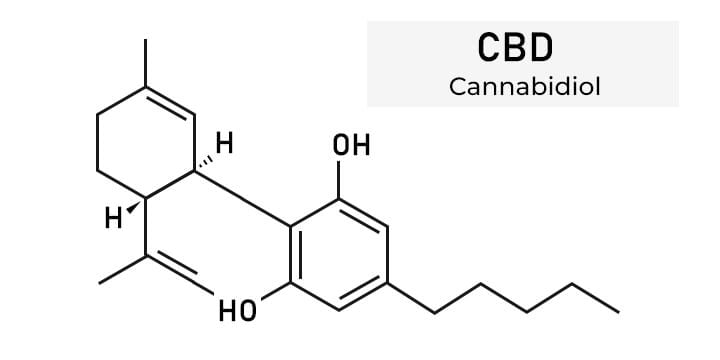
Because CBD doesn’t have an intoxicating effect, it’s more widely available and is used in many product variations, including skin patches, cosmetics, foods and beverages, tinctures, oils, and supplements.
There are also different types of CBD:
- Whole-plant CBD: As the name suggests, oils and extracts use the entire hemp flower in order to preserve the most plant compounds, instead of just extracting the cannabinoid.
- Full-spectrum CBD: It doesn’t use the flower. It has some THC, other cannabinoids and terpenes.
- Broad-spectrum CBD: It contains trace amounts of THC and less cannabinoids and terpenes.
- CBD isolate: Contains only CBD, no THC, and no other compounds.
Legal Status
Cannabidiol doesn’t fall under the same legal restrictions as THC. In many parts of the world, CBD extracted from hemp with less than 0.3% THC is legal for both medical and recreational use. However, CBD derived from cannabis plants with higher THC content may be legal only under certain circumstances. It’s essential to check local laws and regulations regarding using and selling CBD products in your area.
Medical and Therapeutic Properties
According to a report by the World Health Organization (WHO), CBD oil may have therapeutic benefits related to the following conditions: Alzheimer’s, Parkinson’s, Multiple Sclerosis, Huntington’s disease, hypoxic and ischemic injury, chronic pain, psychosis, nausea, inflammation, rheumatoid arthritis, infection, cardiovascular disease, and diabetic complications.
CBD binds to the GPR55 protein, which triggers seizures, and blocks its function. It also acts on specific receptors to alter pain signalling and inflammation. Cannabidiol is also known to relieve neuropathic pain and has the potential to be used as a selective serotonin receptor inhibitor (SSRI), which is a class of medications used to treat depression. CBD can also relieve various skin conditions, including eczema and psoriasis.
Research indicates that it reduces psychosis in people with schizophrenia and alleviates anxiety, but more studies are needed to prove efficacy and safety.
Currently, the only FDA-approved use of CBD is Epidiolex – an oral solution approved in 2018 for the treatment of two types of epilepsy – Lennox-Gastaut syndrome and Dravet syndrome.
Relationship Between THC and CBD
THC and CBD have been inseparable since their inception. They both come from CBGA molecules, or Cannabigerolic Acid, which is where everything starts.
At the end of cannabis’s growth cycle, as the plant absorbs more sunlight, two specific enzymes (THCA and CBDA synthases) turn CBGA into THCA and CBDA, the cannabinoids’ acidic form. Afterwards, a process called decarboxylation converts THCA and CBDA into the biologically active forms we all love. This is why CBGA is also called the mother molecule. It can usually be found in most cannabis strains in tiny amounts, up to 1%.
In 2018, researchers Zirpel, Kayser, and Stehle discovered that the enzyme responsible for synthesising CBDA can also produce THCA. This means that even in the absence of the THCA enzyme, a gene often missing from many commercially available CBD cultivars, CBD hemp will always produce THC.
The researchers further demonstrated that the CBDA synthase produces a roughly 20:1 ratio of CBDA to THCA. So, for every twenty CBDA molecules, there is a single THCA molecule.
In other words, the higher the concentration of CBD in the plant, the more THC there will be. Producing a CBD hemp crop that contains 0% THC is currently impossible.
It’s expected that by the time the cannabis plant reaches the standard approved limit of 0.3% THC, the total CBD content would be roughly between 6% and 7%.
Because of this, you should always be careful when using CBD-based products, as they might contain higher THC levels than what is being labelled.
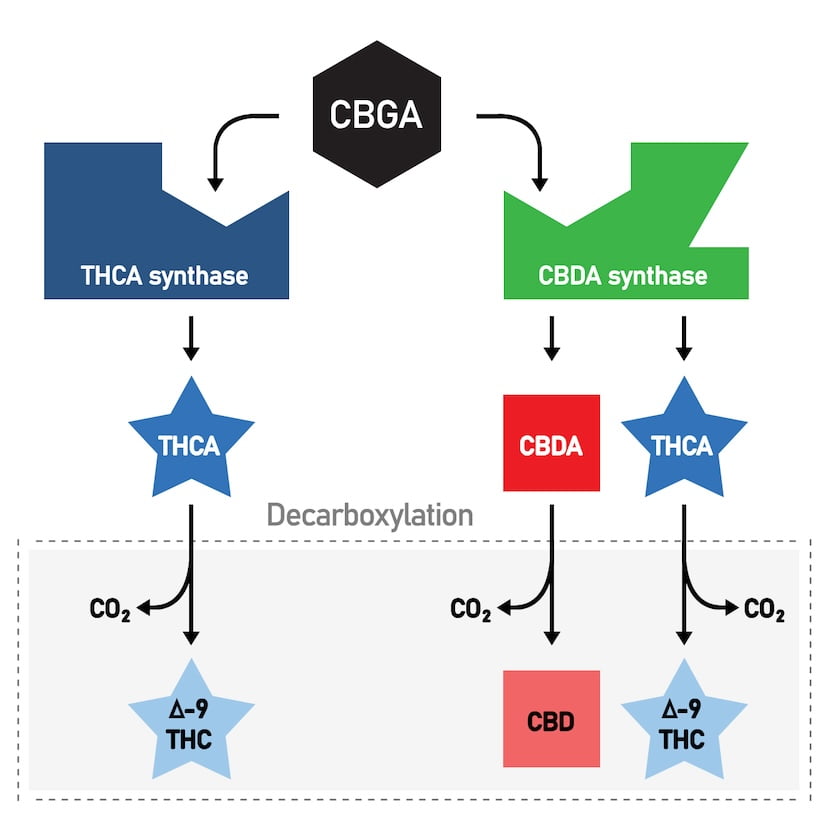
The Entourage Effect
Research also suggests that CBD and THC interact with each other and with the brain’s receptors. This interaction has been labelled the entourage effect.
This is the theory that all compounds in cannabis work together, and when taken together, they produce a better effect than when taken separately.
In his book Smoke Signals, Martin A. Lee writes, “CBD interacts with THC in complex ways, diminishing certain effects (the munchies, sleepiness, the high) while augmenting others. Cannabidiol balances the buzz and softens the euphoria–or, in some cases, the dysphoria–induced by THC, which, in concentrated form, can make people feel very loopy and weird. CBD is the yin of THC’s yang.”
THC and CBD’s relationship is essentially a balancing act. Each can influence the other’s effects, creating a spectrum of experiences. It’s not just about getting high or reaping health benefits. It’s also about the synergy between these two compounds.
Conclusion
Although THC (tetrahydrocannabinol) and CBD (cannabidiol) come from the same cannabis compound, they have distinct differences. THC is psychoactive, meaning it can cause a high. Because of its intoxicating effects, THC use is illegal in most parts of the world and is regulated on an international level by the UN’s 1961 Single Convention on Narcotic Drugs.
CBD, on the other hand, is non-psychoactive. It’s commonly used for its therapeutic benefits, such as reducing anxiety, inflammation, and seizures. Because it doesn’t cause intoxication, CBD is often more widely available for the general public in wellness products, medical treatments, and supplements.
Although the two compounds are different, they’re in a symbiotic relationship.
FAQs
What are the key differences between THC and CBD?
THC has psychoactive effects, causing euphoria and intoxication, while CBD does not. CBD has potential anti-inflammatory, anti-anxiety, and analgesic effects, while THC is more associated with recreational use and pain relief.
What are the main uses for THC and CBD?
THC is widely known for its psychoactive effects, i.e., getting high, but it also has medical applications, like pain relief, appetite stimulation, and nausea reduction.
CBD is used for various therapeutic purposes, such as reducing anxiety, inflammation, and seizures, without the psychoactive effects of THC.
Are THC and CBD legal?
CBD derived from hemp (a type of cannabis with low THC content) is legal in many countries as long as it contains less than 0.3% THC.
THC, due to its psychoactive effects, is subject to stricter regulations and may be illegal or require medical authorisation in some regions.
Can THC and CBD be used together?
THC and CBD almost always come together. When combined, they can create what’s known as the “entourage effect,” where the compounds work synergistically to enhance each other’s benefits while controlling some of the adverse effects. The right balance depends on individual needs and preferences.
Are there side effects associated with CBD?
While generally considered safe, CBD can cause side effects such as fatigue, diarrhoea, and changes in appetite. It may also interact with certain medications, so it’s essential to consult with a healthcare professional before using it.
Are there side effects associated with THC?
Yes, THC can cause side effects like dry mouth, increased heart rate, dizziness, and memory impairment. In higher doses, it can cause anxiety and paranoia. Long-term use might be associated with potential risks, including addiction and mental health issues.
What are the therapeutic uses of THC?
THC in medicinal marijuana helps with chronic pain, nausea, muscle spasms, and appetite loss. It also can alleviate symptoms of glaucoma, multiple sclerosis, and cancer-related treatments.
Can CBD counteract the effects of THC?
Yes, CBD is known to reduce some of the psychoactive effects of THC. It can help to counteract anxiety and paranoia that THC might induce in some people.
Is CBD safe for pets?
There are pet-specific CBD products on the market for treating pain, wounds, inflammation, and other conditions. But it’s important to consult a veterinarian before giving anything to your companion.


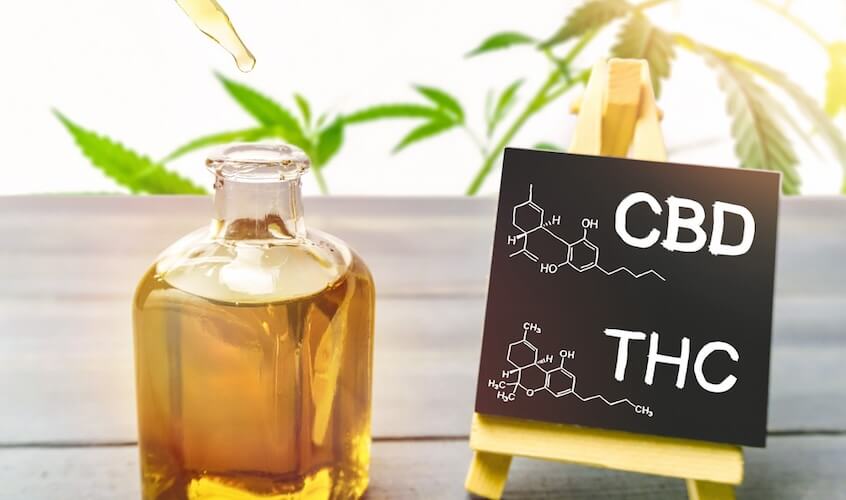





Leave a Comment